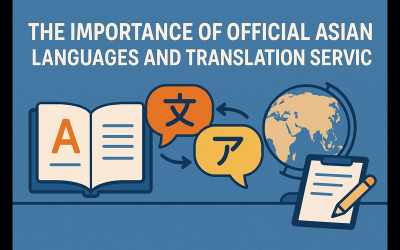In a world that has gone global, with businesses expanding in terms of the geographical location of their operation, intellectual property protection has never been more important. The most essential element of IP protection is patenting, an exclusive right granted to an applicant for any invention. However, with the expansion of businesses across borders, the need for patent translation becomes essential. This blog post is all about why the translation of patents is so critical and how you must ensure that your patents are translated correctly.
What is Patent Translation?
General speaking, patent translation is translating a patent document from one language into another. Patent translation is a very technical field of translation that requires one to have a technical qualification both in the area of a patent industry and in the legal terminologies involved in the translation of a patent. Different from general translation, translation of patents is not word for word translation but conveys the exact meaning of complex technical and legal concepts. Just one mistake in the translation: it will mean ambiguity, lead to legal disputes, and may even invalidate the patent itself.
Technical Translation ServicesTranslation services for technical documents demand a certain level of knowledge or practice in the field in question. Protranslate is ready to assign your next project to an expert. Get a Quote |
Why Patent Translation is Important
1. Expanding into International Markets
A patent holder is ever keen on expanding his operations into new markets where proper protection for his innovations is available in those markets. Considering the filing of patents, most patent offices may require that the patents be filed in the official language of the country. That is to say, if you are in the process of expanding to countries like Japan, Germany, and Brazil, then you will have to get it translated into Japanese, German, or Portuguese, accordingly.
Accurate translation implies that your invention is well protected in those new markets. You will prevent other people from copying your invention, or even using it without your permission. You are also allowed to enforce your rights through foreign courts of law when need be.
2. Legal Compliance
Laws and regulations regarding patents differ in individual countries. To comply with these laws, it is of great significance that your patent has been translated properly. An inferior quality translation can be the source of many legal disputes, including denied patent applications and even problems in the protection of a patent from infringements.
For instance, the European Patent Office (EPO) requires patents to be translated into not one of their three official languages: English, French, or German. A poor translation can, therefore, result in the rejection of your patent application. In the same vein, in countries such as China, where it is mandatory to translate a patent, a poorly translated one may not easily be enforceable and, thus, leaves your invention exposed to practice by others.
3. Avoiding Patent Invalidation
This means that patent translation does not just concern compliance—it concerns the very validity and enforceability of your patent. Just one mistranslation may mean the invalidation of your patent. For example, mistranslating a technical term may result in changes to the scope of your patent. This could result in an ambiguous or misleading description, which competitors could use as grounds for claiming your patent is invalid and getting it overturned.
Also, patents often involve litigation where every word and phrase may be subject to judicial review. An inaccurate translation could weaken your position in court, which may allow competitors to challenge your patent. Hence, professional translation is an absolute prime need to help one protect intellectual property.
4. Technology Transfer
Technology transfer is a routine matter in the modern, connected world, among countries. The necessity of companies transferring their patented technologies to foreign collaborators in cases of licensing agreements, joint ventures, or mergers and acquisitions arises very frequently. All such transactions require the involvement of accurate translation of patents.
Attention should be paid, while transferring technology, to the fact that all the parties attached to the patented invention must remain noticeably clear. For this, the patent documents comprising the claims, specifications, and drawings have to be translated exactly. A well-translated patent ensures the process of technology transfer is smooth, avoiding potential risks of miscommunication or disputes.
5. Enhancing Patent Portfolio Management
A company that operates and manages its patent portfolio across different countries would find it hectic to do the same. Patent translation is inevitably sought regarding proper management of the patent portfolio. So, it can assist in tracking patents within different districts for the company to become aware of infringement or legal issues concerning the same.
More importantly, with accurate translation of patents, it will be possible for companies to conduct thorough searches and assessments of patents in foreign markets for competitors and the strength of the patent portfolio to determine filing or acquiring future patents.
Challenges in Patent Translation
As much as the significance of the translation of patents is vividly clear, it does not happen without some challenges. Patent translation is a very specialized type of translation that requires highly technical and legal language appreciation. Here are some major challenges in patent translation.
1. Technical complexity
Technical Language Patents are at times written in a very technical and complicated language, more so in the industries of biotechnology, pharmaceuticals, and engineering. A patent translator should have a good understanding of the technical vocabulary in these fields to translate realistically and precisely. It includes translation excellence, but it is a composition of technical excellence.
2. Legal Precision
Patent translation follows closely after the medical field in terms of legal wording and patent law knowledge. Translation staff need to know the target country so that they can involve the necessary legal wording required in the translation. This even goes as far as the patent claim language, which is familiar and country-specific.
3. Cultural Nuances
Language is often improved with cultural subtleties, and this might interfere with the way the patent documents are interpreted. It thus becomes the role of the translators to remember this and bring forth the intended meaning of the original patent under their best judgment. So it requires great congruency not only between the source and target languages but also within the cultural context in which the patent is to be used.
4. Consistency
One word sums it all up in the translation of a patent: consistency. It is upon the translator to supply constant use of the wording and terminology incorporated in every part of the patent document to ensure the proper translation of the patent. This is applicable in patent claims in one way or another. Changes in wording could mean one product and the other a patent. To achieve this, the translator needs to be diligent about consistency while translating the content of the patent.
Professional Translation ServicesGet your documents translated and certified by a professional translator in 120+ languages with 24 hour delivery. Get a Quote |
The Role of Professional Translation Services
The involvement of professional patent translation services is necessitated because the translation of patent documents is truly complex and difficult. That is why well-competent professional translation services are in greater need—that is, specialized translation services that offer proper translation of patents. Patent translators rely on a good technical and legal knowledge base and have an understanding of the particular requirements of translating patents.
Professional patent translation services assure the translation of the patent is carried out with accuracy. This lessens the chance for any dispute. So, your patents will be safe in foreign markets when it comes to intellectual property rights. Thus, professional translators make use of the most recent technologies with the aid of translation software in order to make translation processes qualitative, accurate, and speedier.
Conclusion
Patent translation is a highly critical concern in intellectual property protection in today’s global economy. With companies entering new markets, accurate patent translation has never been more critical in the protection of innovations, meeting local regulations, and preventing patent litigation. Part of the accurate patent translation lies in professional translation services for safeguarding your intellectual property across borders. Patent translation is one of the most specialized and complex domains that can be accurately made with the help of professional services in the translation domain.
 Rana Maalouf
Rana Maalouf

